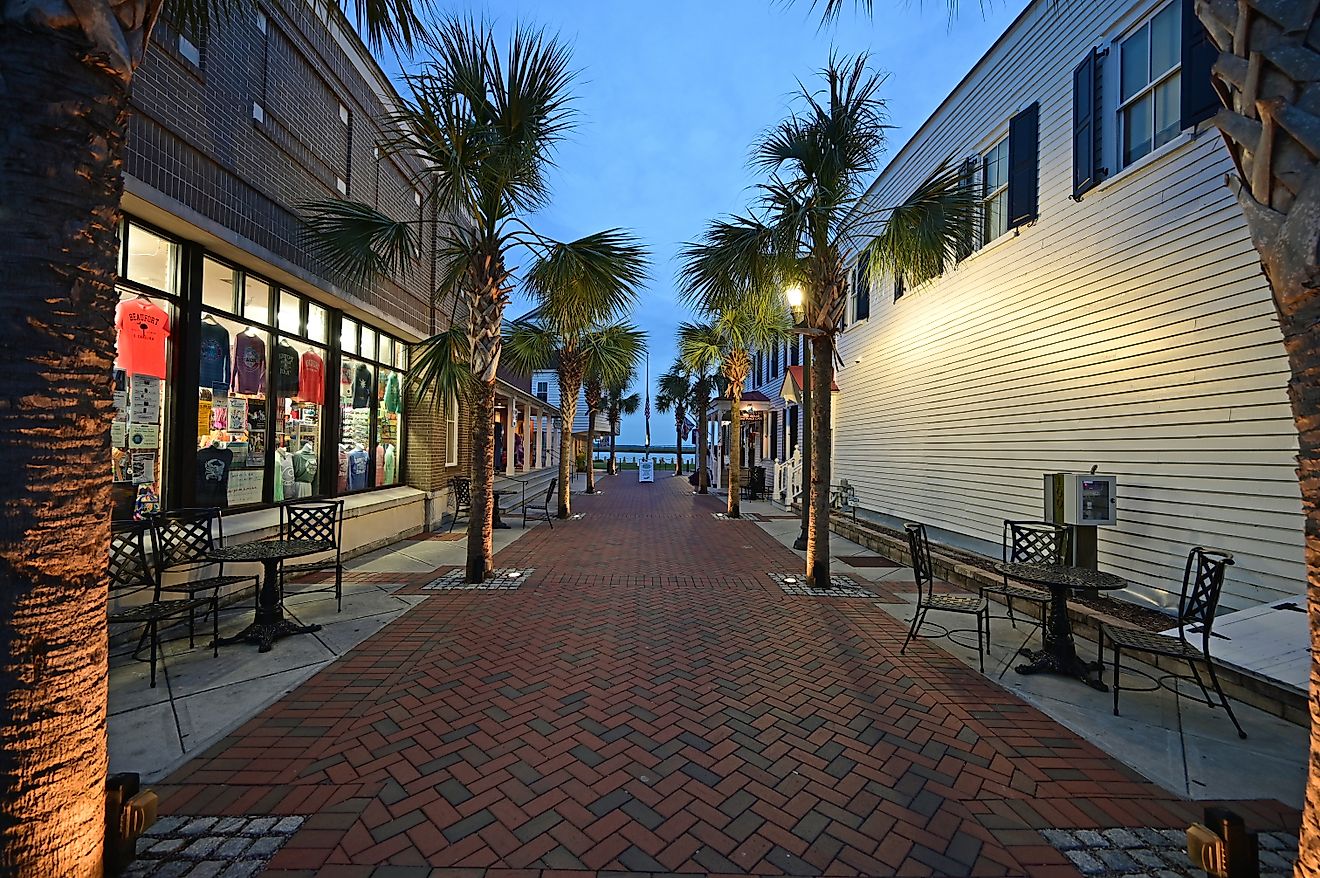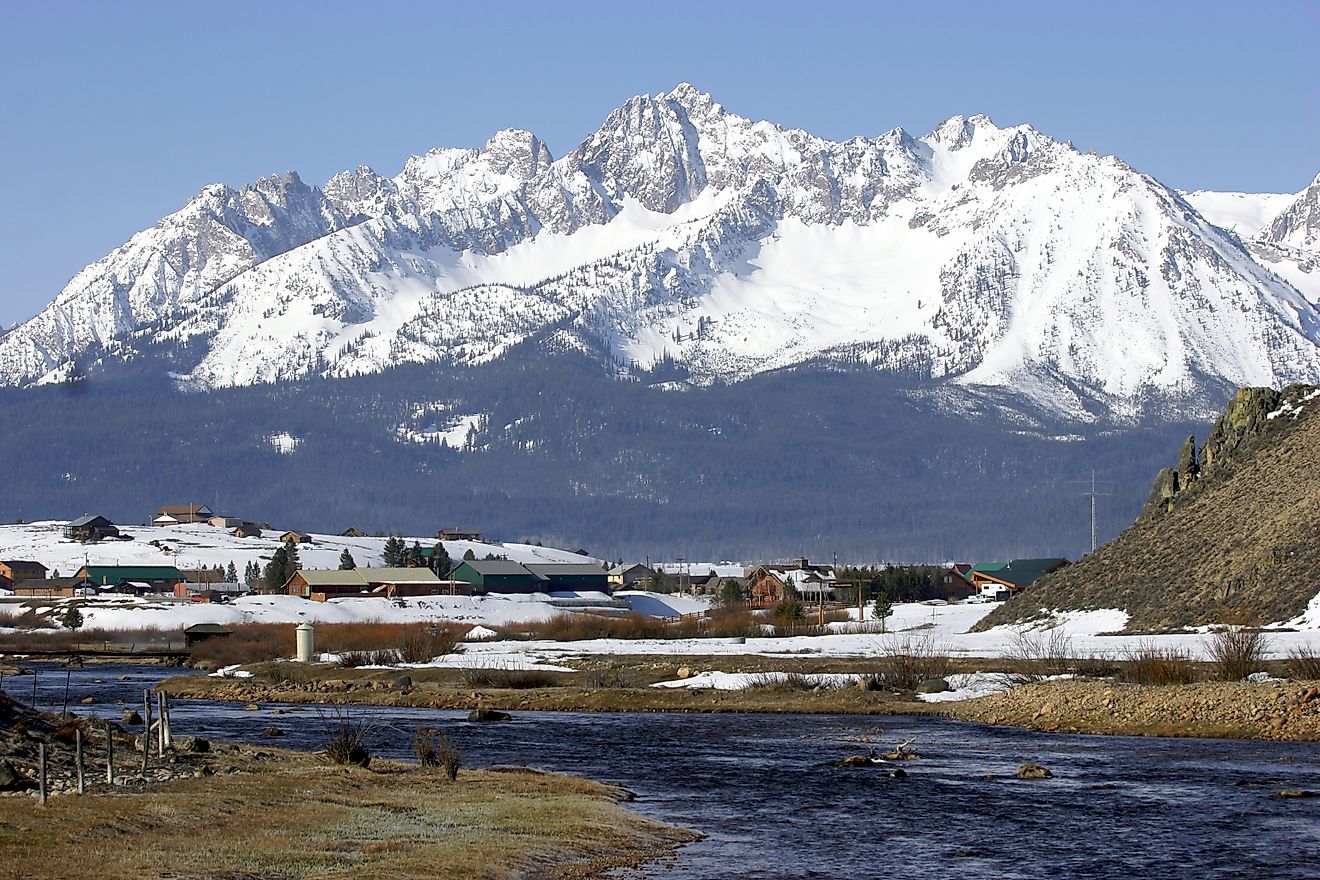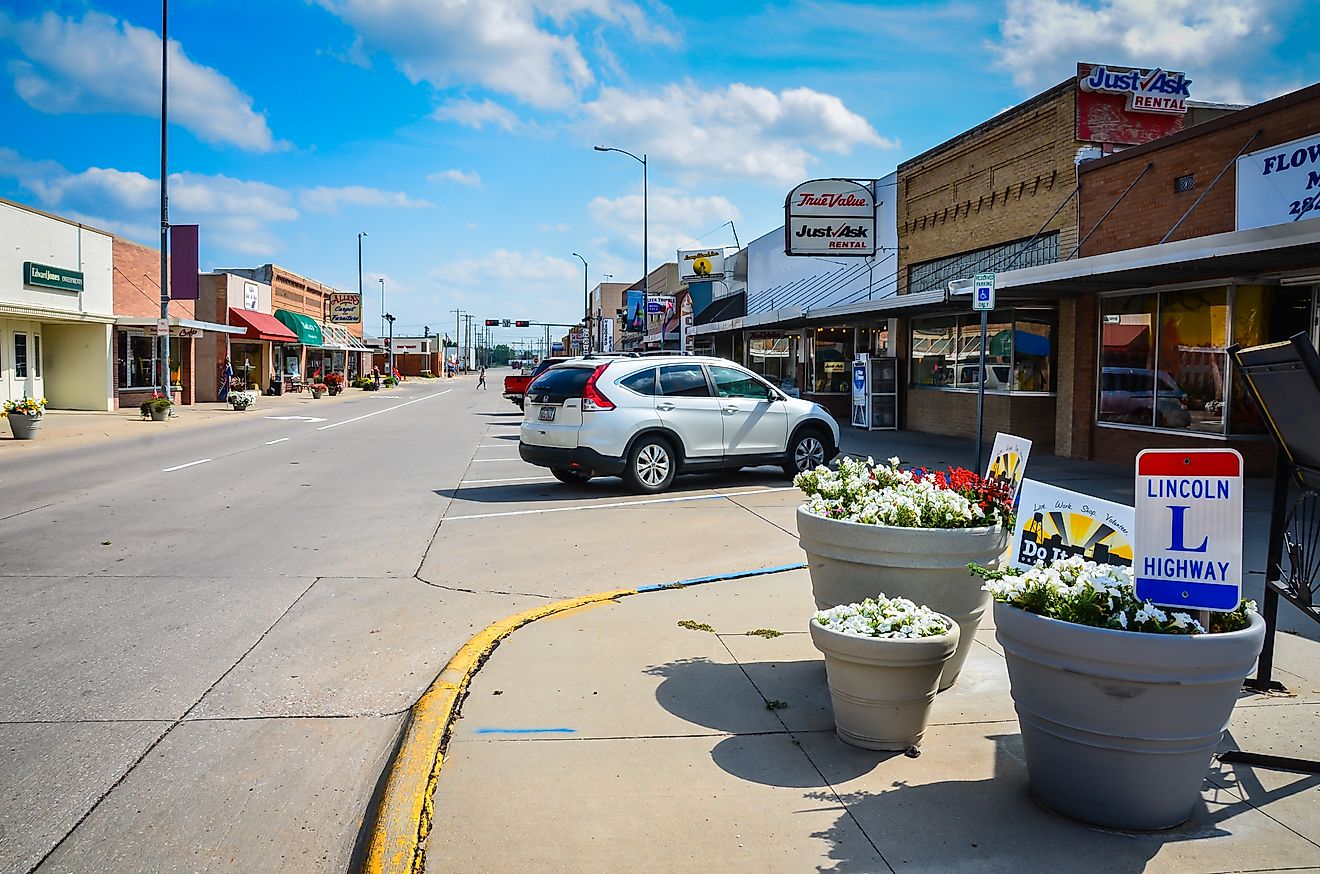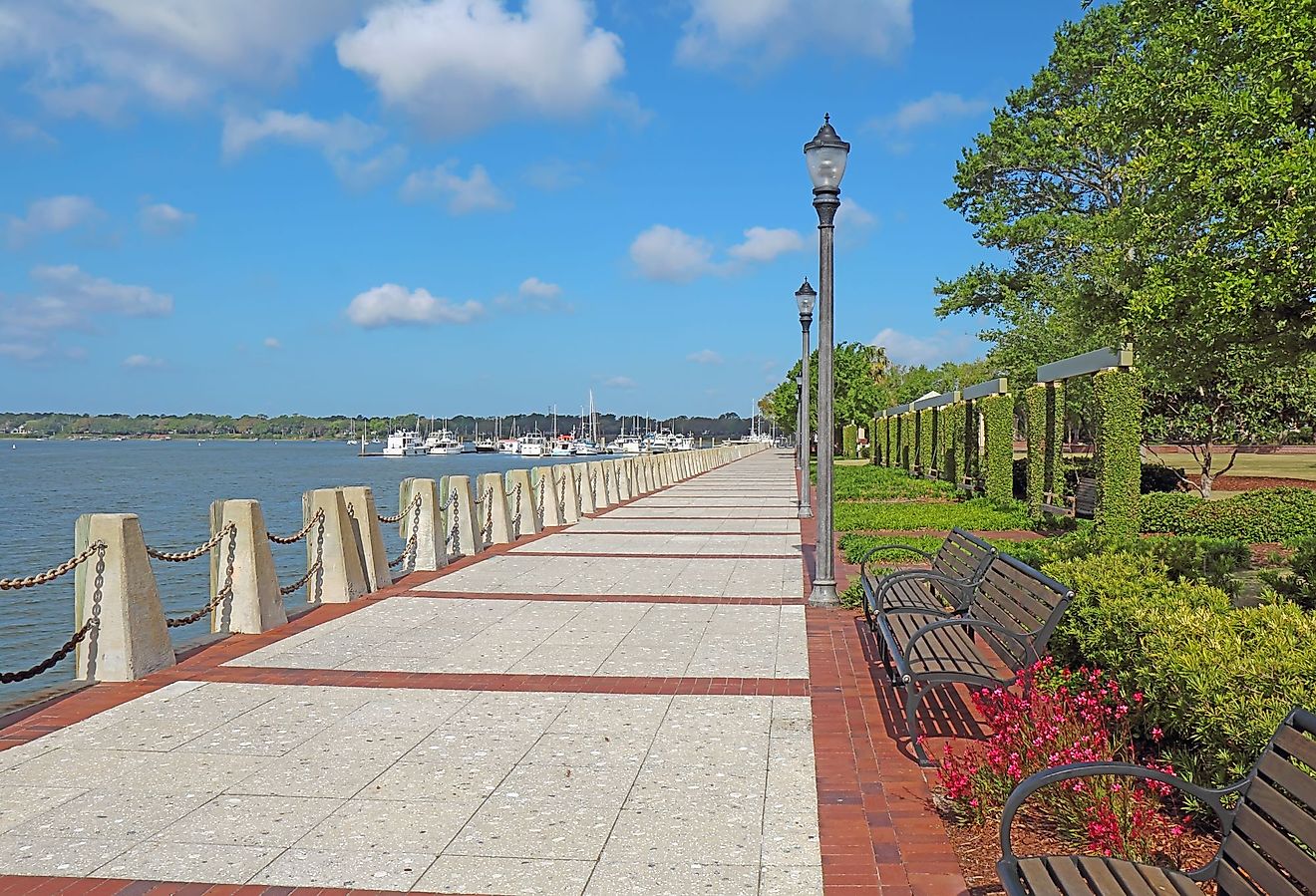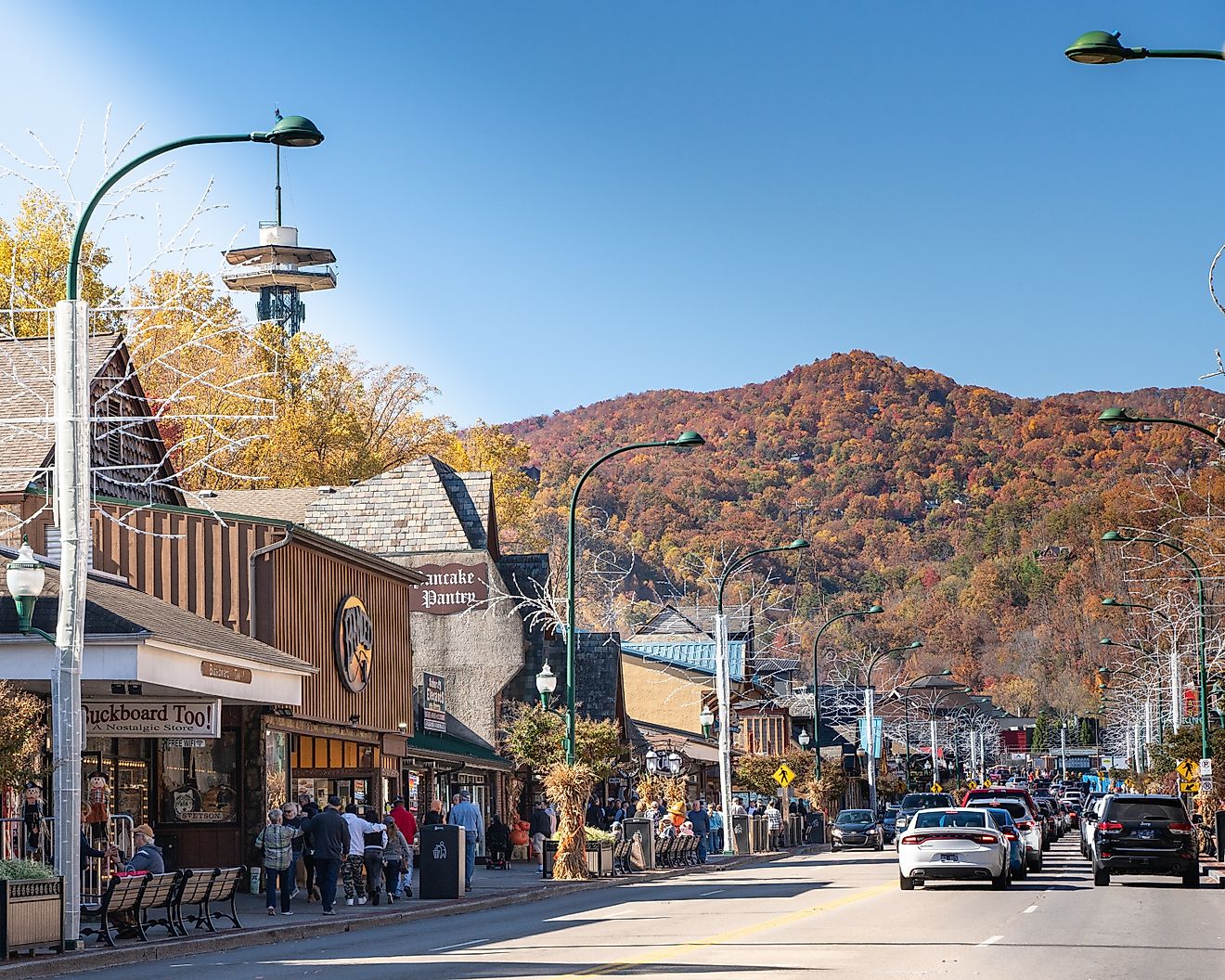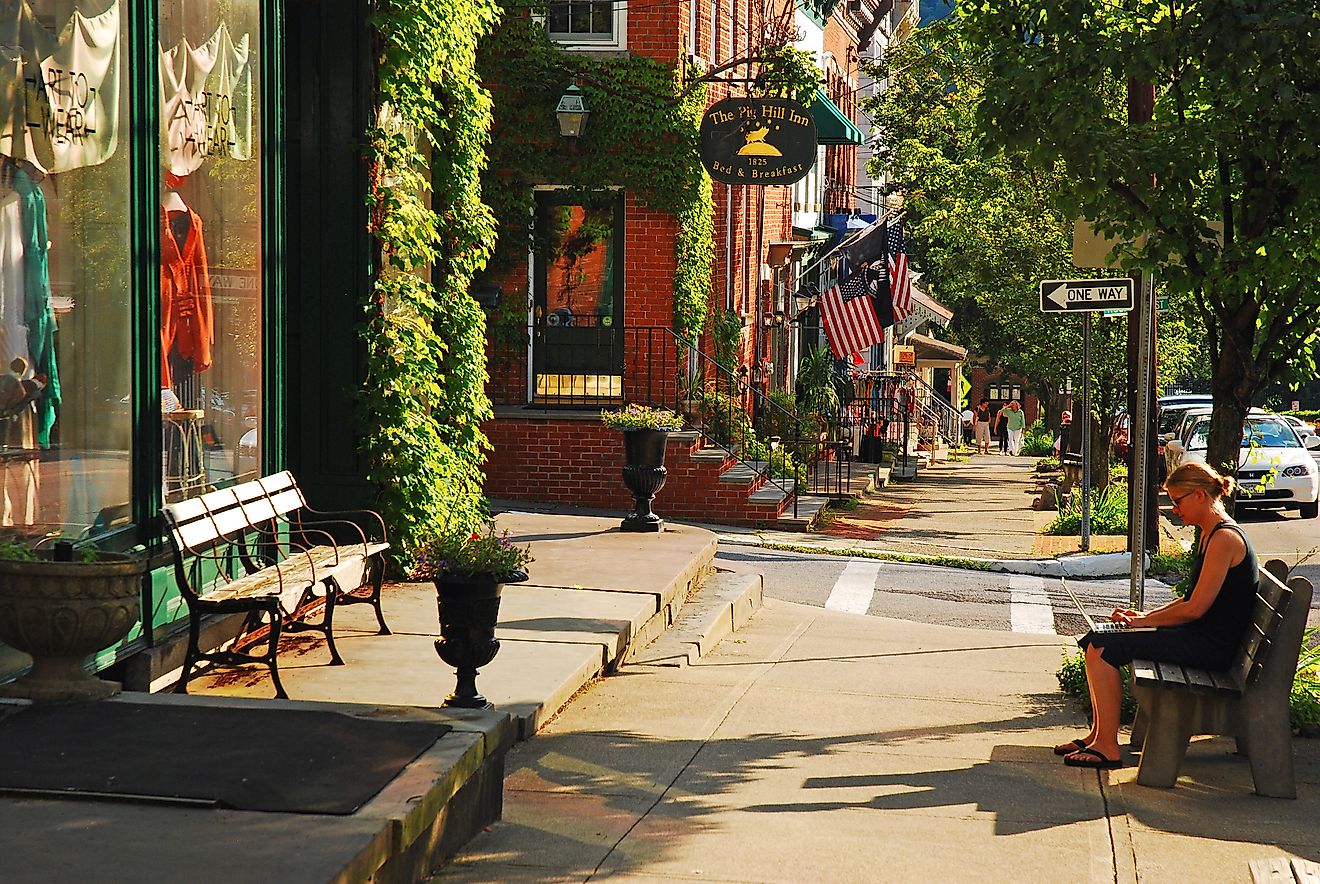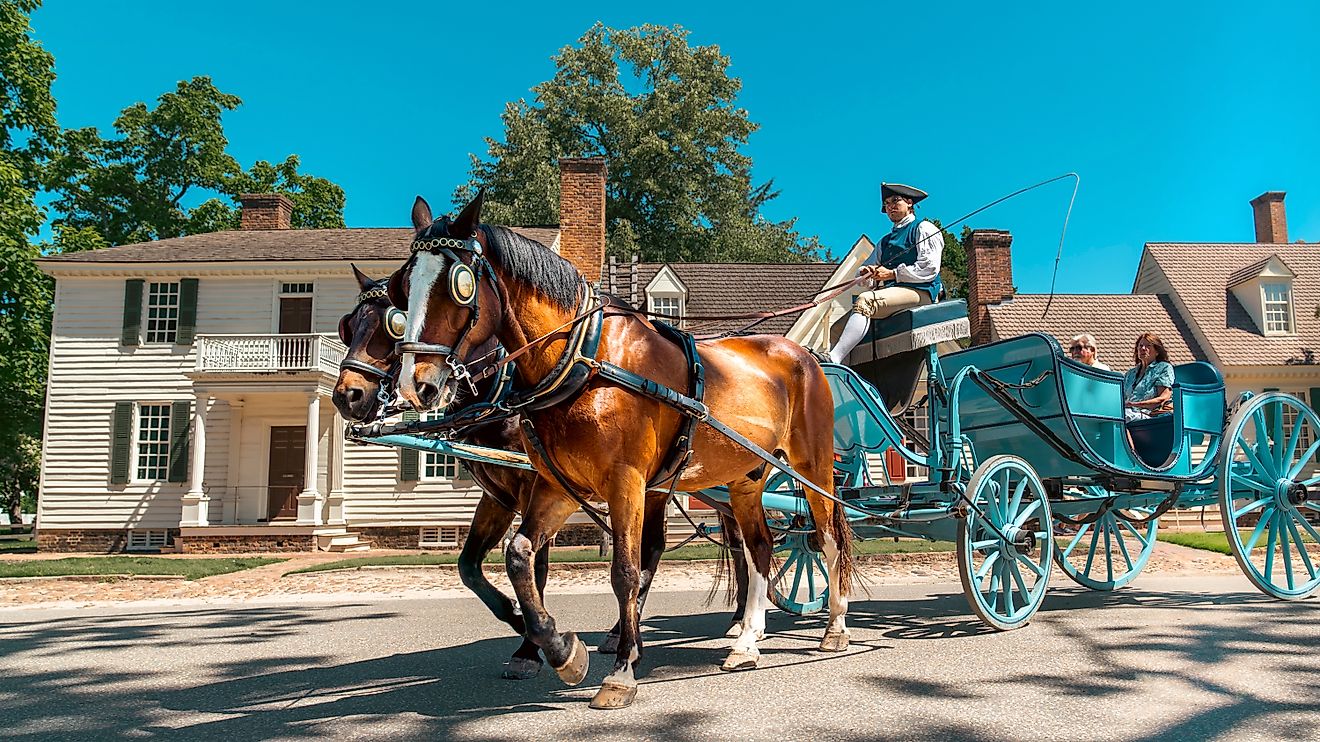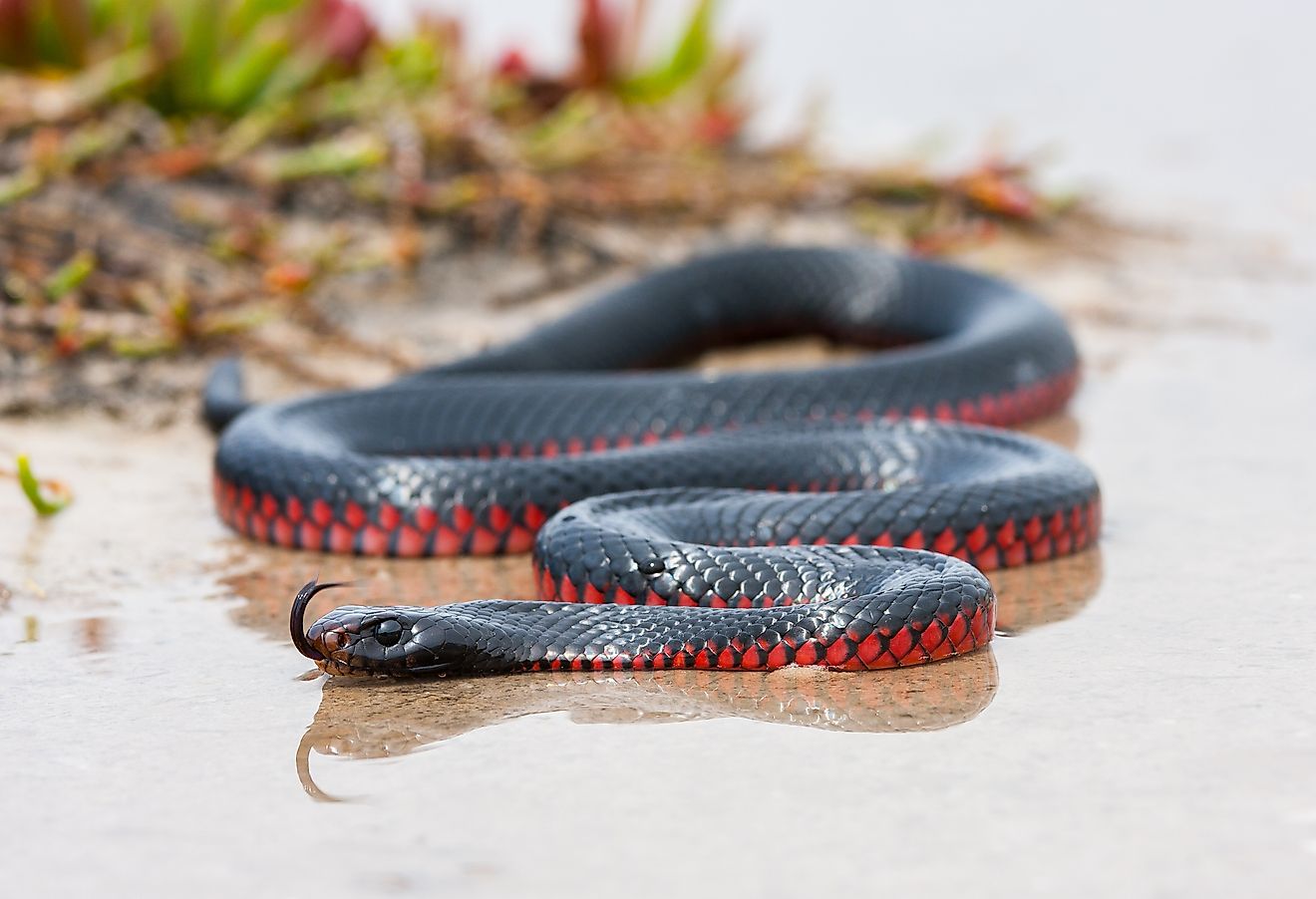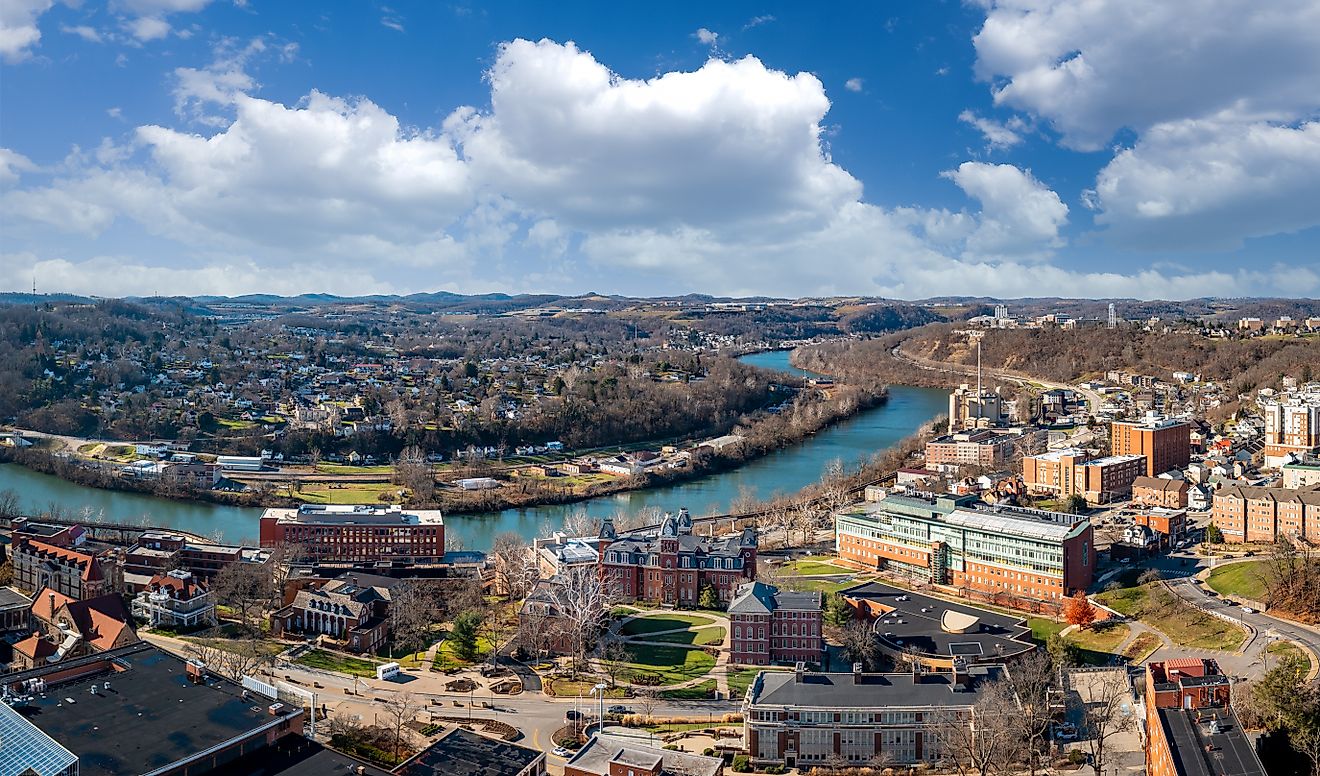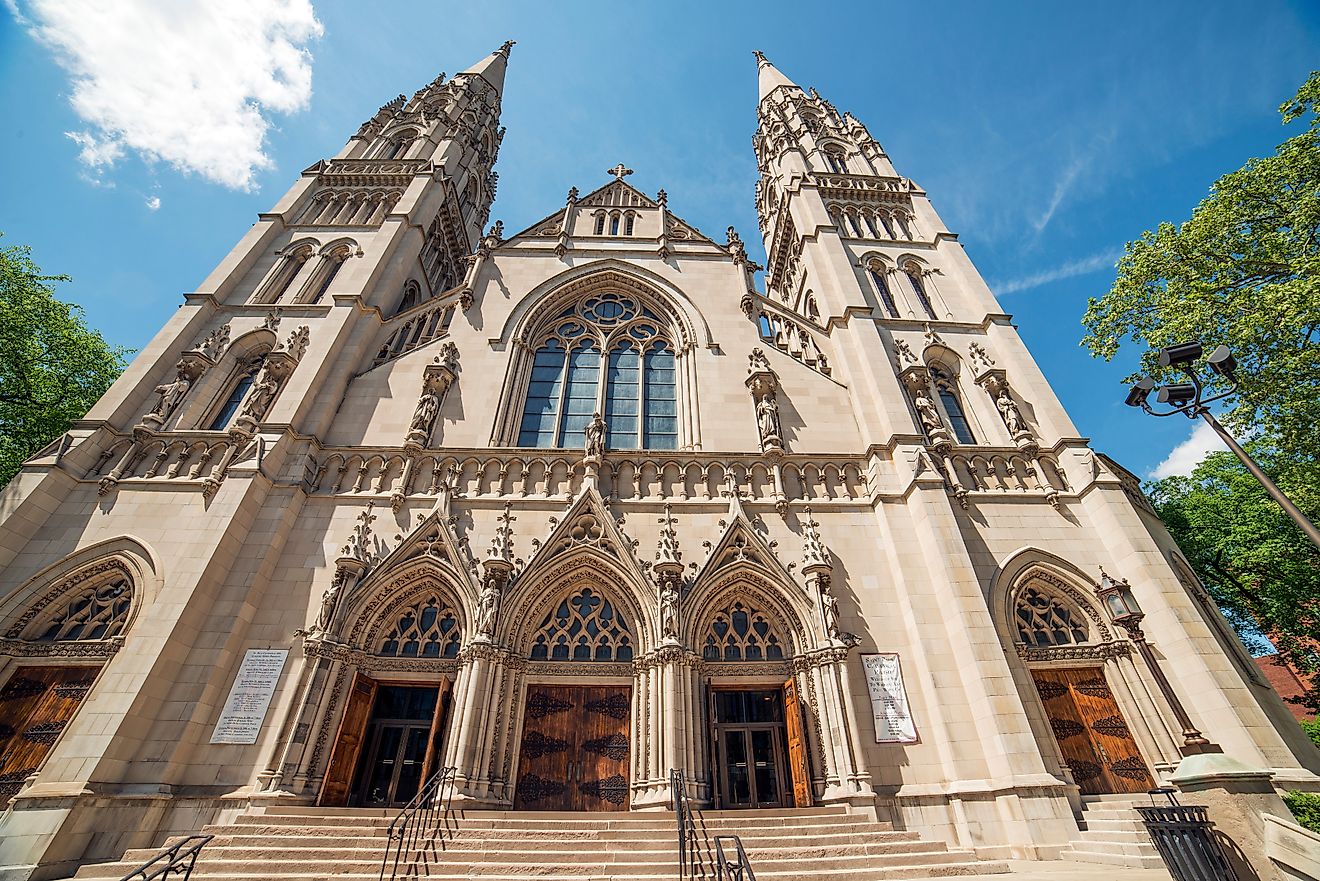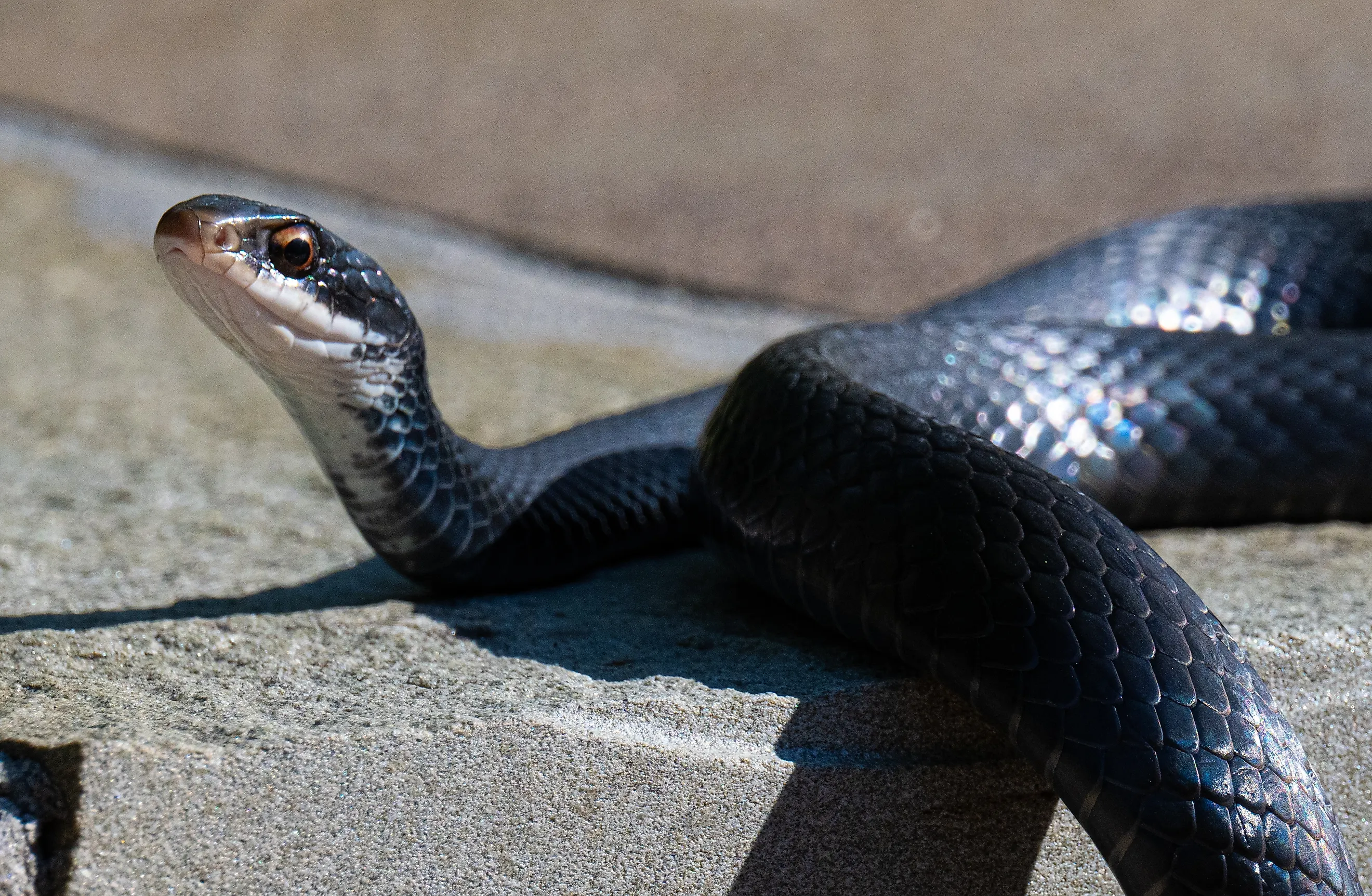
10 Most Snake Infested State Parks In New York
New York’s most crowded arenas aren’t theaters or stadiums, they’re stone walls and river gorges where snakes gather as soon as the frost lifts. From the Hudson Highlands to the Allegheny Plateau, the state’s park system stitches together a continuous network of ridges, talus fields, wetlands, and scrub, exactly the microhabitats that concentrate reptiles. The twist is proximity: some of the densest snake sites sit within a quick drive of the five boroughs, proof that one of the Northeast’s most robust reptile communities lives beside one of its largest human ones.
Expect a cast that ranges from venomous timber rattlesnakes and copperheads in upland rock to black racers on open ledges, hognose snakes in sandy barrens, water snakes along rivers, and garter snakes almost everywhere in between. Park by park, we’ll detail which habitats drive the numbers, when seasonal activity peaks, and which species dominate.
Harriman State Park
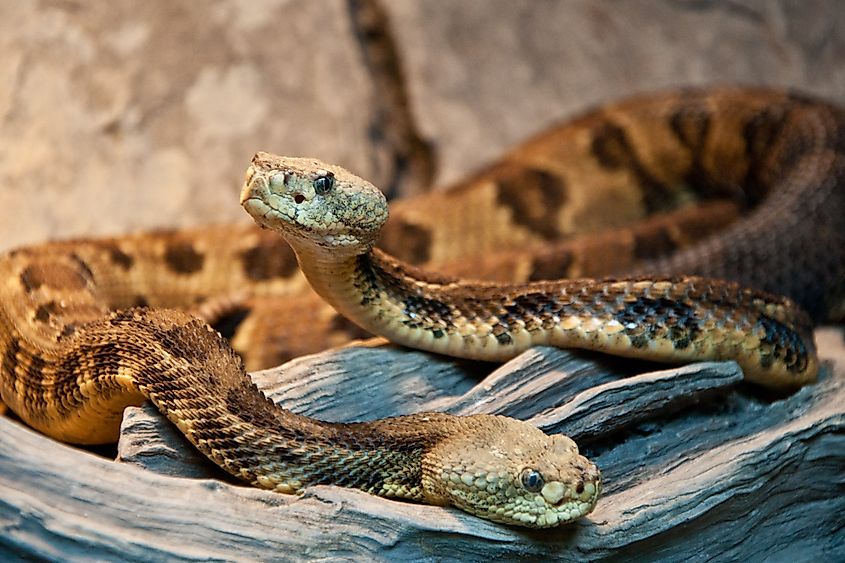
Just north of New York City, Harriman State Park spreads across ~47,000 acres of forest, lakes, exposed rock, and historic ruins on ancient folded bedrock. Sun-soaked ridges, plus wetlands and upland rock fields, generate warm pockets that support one of the state’s most active snake communities.
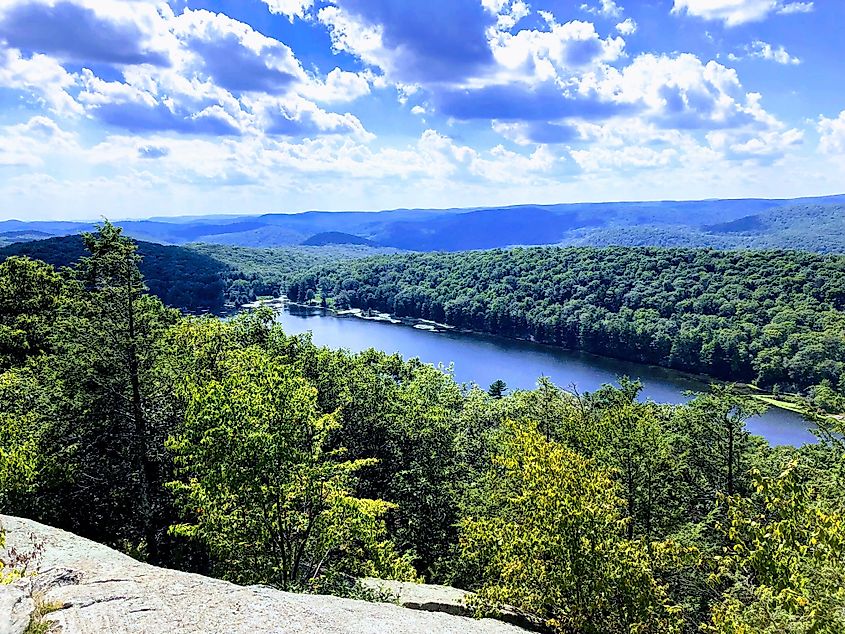
Across Harriman’s uplands, timber rattlesnakes use rocky ridge crests for communal dens, then drift into lower valleys in summer along game trails and stony corridors. Copperheads hold forest clearings and streambeds, their camouflage blending with leaf litter and broken shale; both species are venomous and protected. Black racers and milk snakes work dry hillsides and talus, while garter snakes cluster near marshes and pond edges. Layered forest, warm rock, and intermittent wetlands together create prime ground for hunting, thermoregulation, and overwintering in high numbers.
Bear Mountain State Park
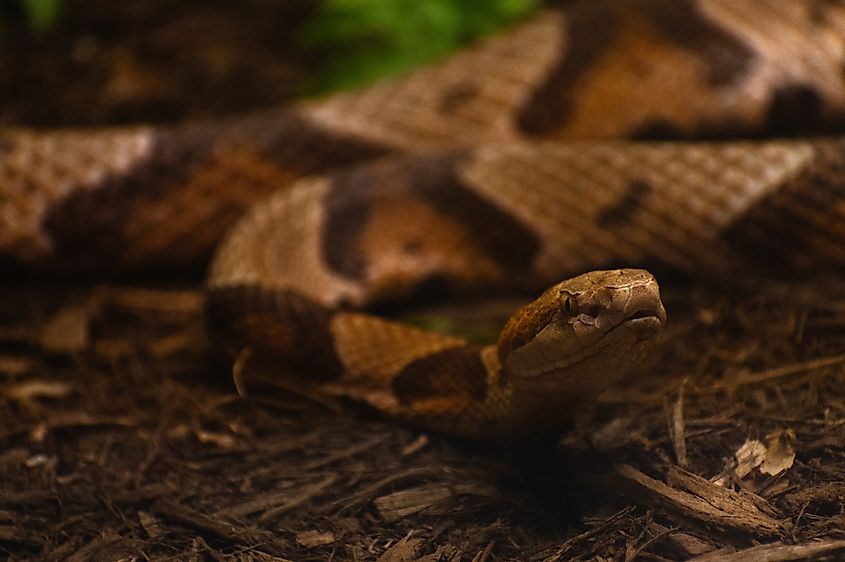
Above the Hudson, Bear Mountain rises on steep granitic gneiss, dry upland forest, and shallow ravines threaded with early 20th-century stonework; the Appalachian Trail cuts through terrain shaped by fire, ice, and erosion. South-facing ledges and old quarry cuts bank heat from early spring into late fall.
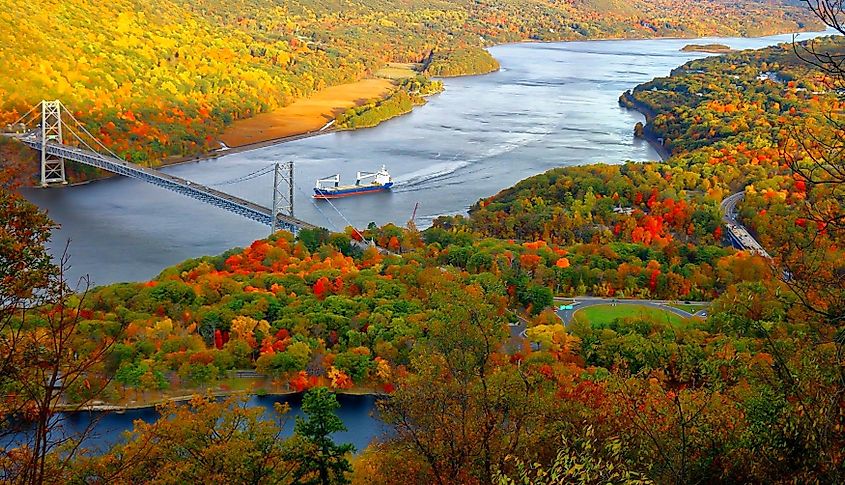
Timber rattlesnakes den in creviced outcrops high on the mountain, then drop to meadow and forest edges to forage as the season advances. Copperheads stay lower, frequenting rock walls and debris piles where prey gathers; both are venomous and lean on stillness for cover. Black racers and milk snakes patrol old roads, trail margins, and open ledges—often sharing basking sites with other reptiles. Abundant open rock, light disturbance, and ample cover make this a standout snake zone in the Hudson Valley corridor.
Hudson Highlands State Park
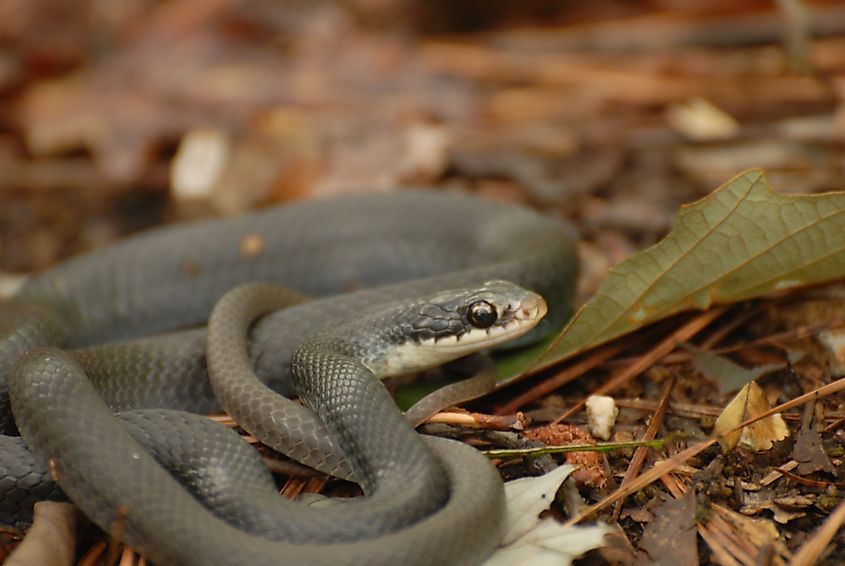
Here the park spans steep ridges and narrow valleys—Breakneck Ridge and Bull Hill among them—and adjoins Scenic Hudson’s Mount Beacon Park. Bare rock, thin soils, and abrupt elevation shifts dominate, with south-facing slopes warming quickly while interior parcels remain largely undisturbed.
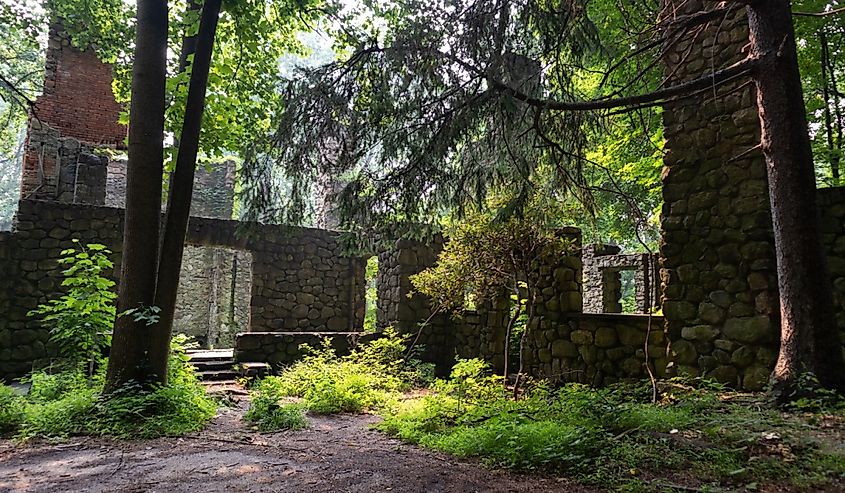
Copperheads occupy the middle bands, using stone walls, rock piles, and leaf-filled drainages for concealment. Timber rattlesnakes den on high ledges and fractured cliffs, then travel downslope in summer to hunt along brushy slopes and talus fringes; both species rely on stillness and close-range camouflage. Black racers and milk snakes work open ledges and lightly wooded benches, while garter and water snakes stick to stream crossings and wetland margins. Elevation, thermal exposure, and isolation combine to spread snakes densely across the warm months.
Sterling Forest State Park
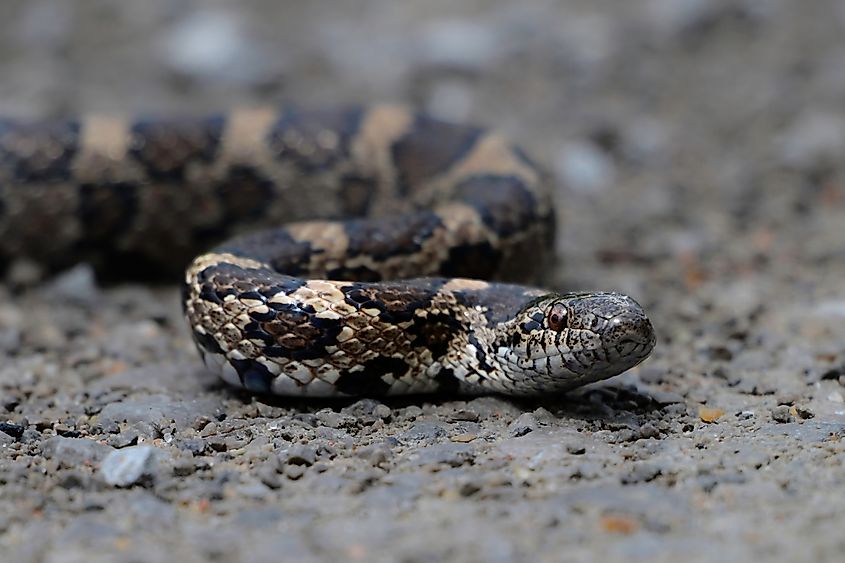
On the New Jersey border, Sterling Forest holds more than 22,000 acres of largely undeveloped hardwood forest, lakes, and ridgelines marked by 19th-century iron mining. Fractured bedrock and talus trap heat, and broad elevation changes with low human pressure let wildlife move freely through open and forested zones.
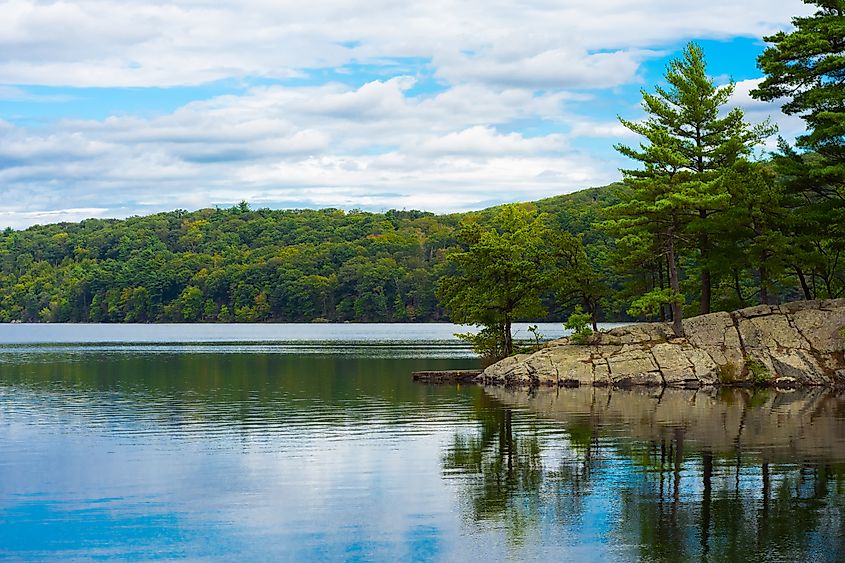
Timber rattlesnakes anchor several ridge systems, using rock outcrops as den and basking sites before descending to lower forests and fields along deer paths and stone-lined drainages. Copperheads cluster on rocky slopes, wetland edges, and brushy clearings rich in rodents; both are venomous ambush hunters. Black racers cut through scrub and young forest. Milk snakes, garter snakes, and ribbon snakes spread out near wet meadows and transitional edges. Warm slopes, a strong prey base, and minimal disruption underpin one of the region’s most stable snake populations.
Minnewaska State Park Preserve
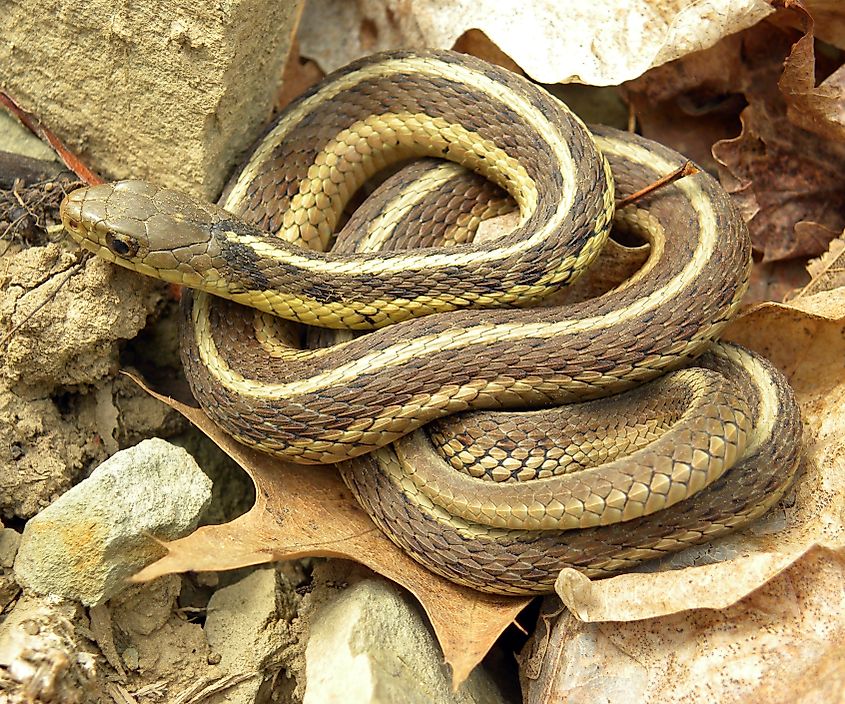
Minnewaska crowns the Shawangunk Ridge with conglomerate cliffs, dwarf pine barrens, shallow glacial lakes, thin-soiled bedrock, and talus-lined escarpments. Sun, fire-adapted communities, and low-nutrient soils keep much of the ridge dry and open, while old carriage roads and little disturbance keep the landscape warm and connected.
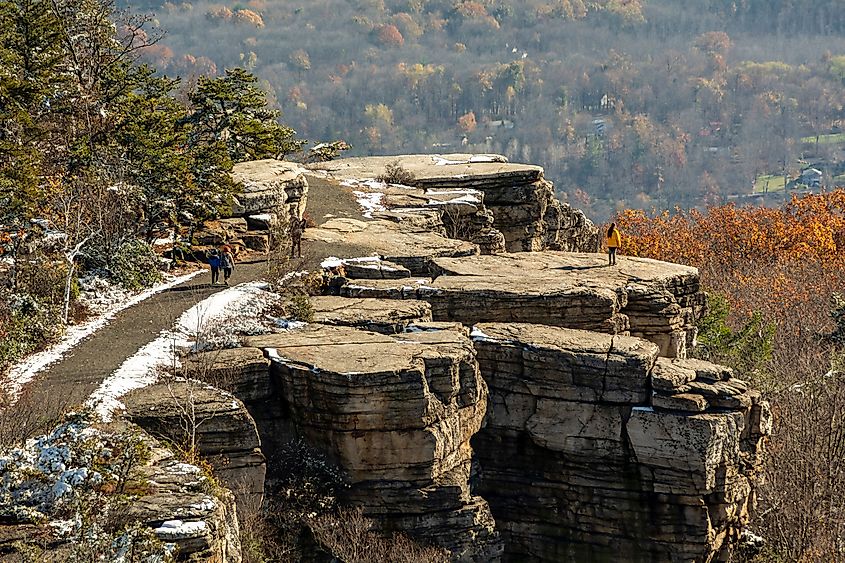
Timber rattlesnakes den in deep fractures along the southern and western rim, bask in spring, then slide downslope in summer to feed along brushy forest edges, returning by fall on habitual routes. Copperheads hold mid-slope talus, wooded ledges, and powerline corridors where small mammals are active; both are venomous and often remain motionless when approached. Black racers and milk snakes favor open ledges and clearings, and garter and water snakes are frequent at lake edges and wetland margins. The ridge’s structure channels wide reptile movement and drives high seasonal density.
Allegany State Park
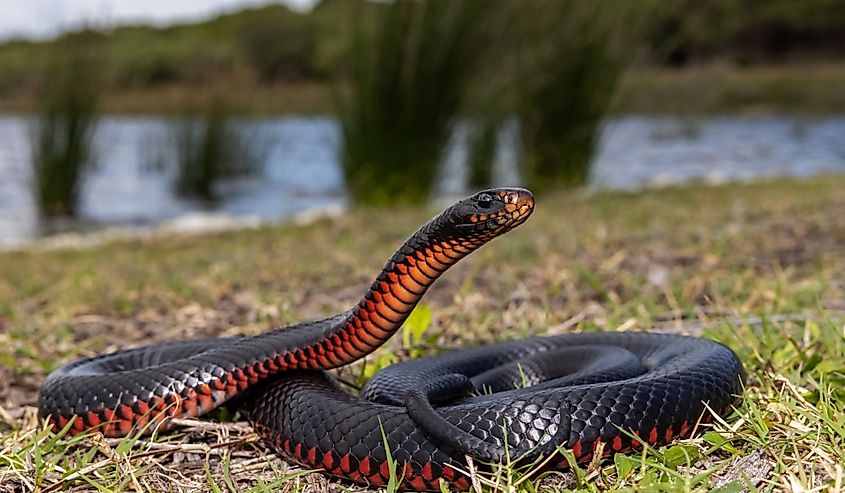
New York’s largest state park, Allegany spans more than 64,000 acres near the Pennsylvania line, blending hardwood forest, sandstone ridges, and glacially carved valleys on the Appalachian Plateau’s northern edge. Upland plateaus, forested slopes, and stream corridors, plus old logging roads, shale outcrops, and quiet hillsides, maintain warm, low-disturbance settings that suit reptiles.
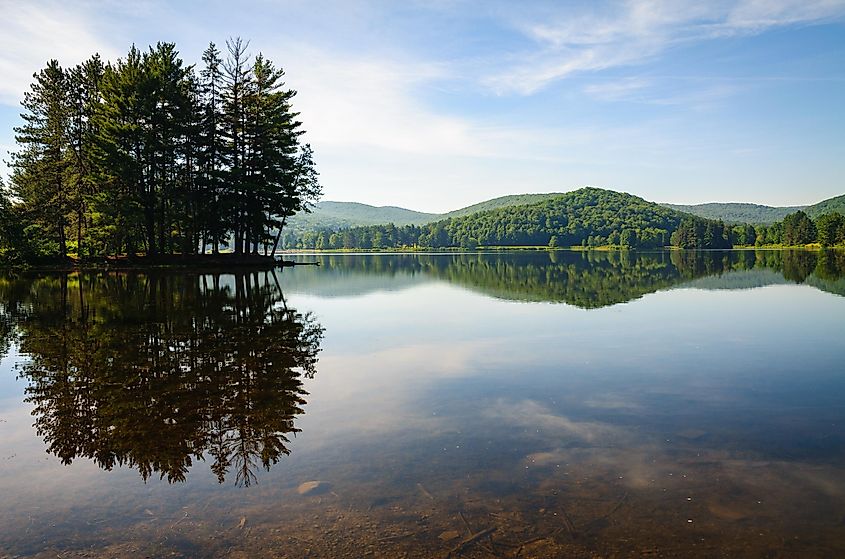
Timber rattlesnakes historically occurred on remote, south-facing ridgelines with shallow soils and exposed rock, dens tucked into sandstone crevices and summer activity pushing into adjacent valleys. Eastern garter snakes stay widespread along trails, wetlands, and forest openings. Northern water snakes use ponds and slow streams, basking on flat rocks or logs, while milk snakes and red-bellied snakes turn up beneath logs and in talus near forest edges. The park’s size, varied topography, and relative quiet provide long-term refuge and support consistently strong snake numbers in western New York.
Letchworth State Park
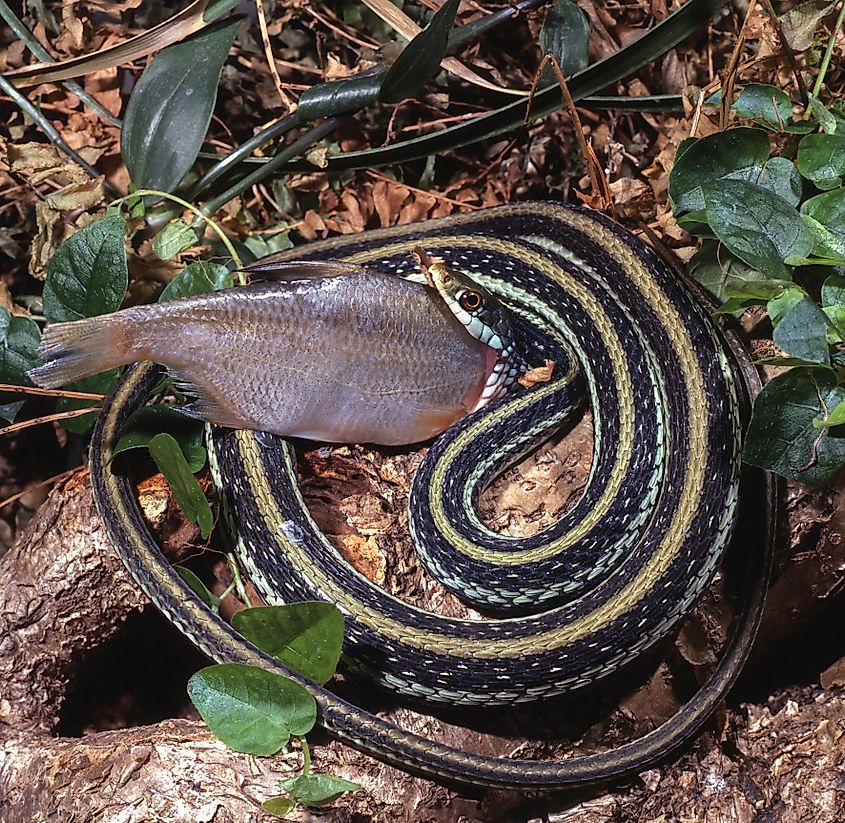
Following the Genesee River through a deep shale-and-sandstone gorge, Letchworth stacks steep cliffs over pine stands, meadows, and former farm fields. Erosion constantly opens fresh rock, and sun-facing slopes hold heat, creating an expansive patchwork of warm, lightly disturbed reptile habitat.
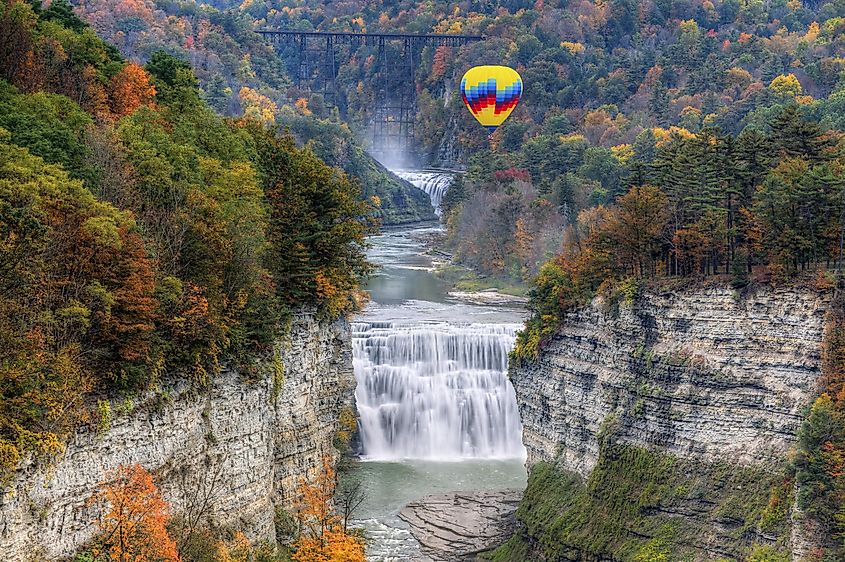
Timber rattlesnakes use isolated ledges on the gorge rim for denning and basking, then range inland in summer along brushy slopes and the edges of fields. Copperheads are absent here; northern water snakes are common on riverbanks and feeder streams, coiled on rocks or swimming the shallows. Garter snakes move through fields and forest edges, sometimes gathering in numbers near wetlands, while eastern milk snakes and red-bellied snakes work under logs and in rocky debris. Sharp relief, scattered ledges, and shifting moisture gradients keep snake activity high, especially where foot traffic stays light and sun exposure is long.
Hither Hills State Park
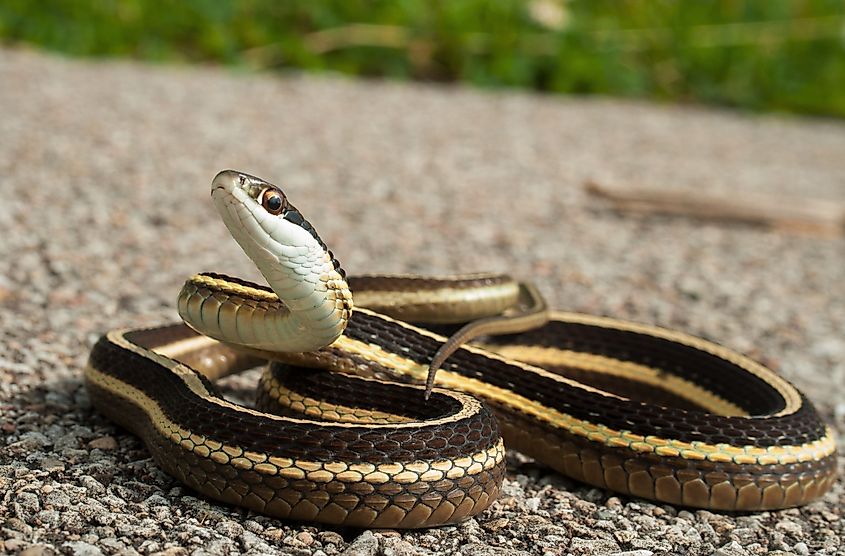
At eastern Long Island, Hither Hills occupies a coastal strip between the Atlantic and Napeague Bay, its interior rolling with dunes, pitch pine thickets, and dense shrub. Salt spray, drifting sands, and periodic fire warm an unstable landscape; set in a coastal migration corridor, open terrain and seasonal prey further focus reptile activity, snakes included.
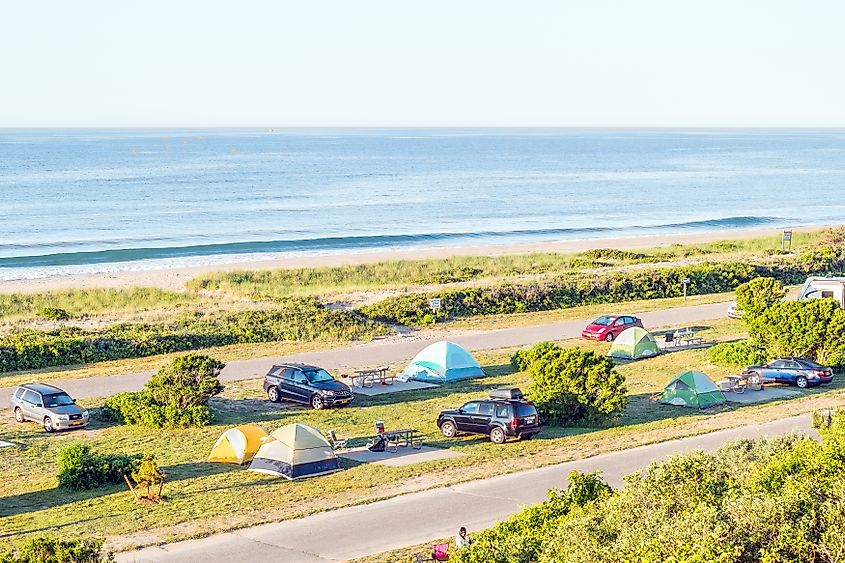
Eastern hognose snakes work the sandy interior, burrowing with upturned snouts to feed on amphibians in sunny openings; they bluff and display rather than use venom. Black racers move fast through shrub edges and open ground, while garter snakes gather around vernal pools and dune swales, especially in spring and fall. Ribbon snakes, a semi-aquatic relative, keep to wetland margins and moist hollows in the pine understory. Open canopy, dry soils, and coastal heat retention combine to make Hither Hills one of eastern New York’s snake-active strongholds.
Montauk Point State Park
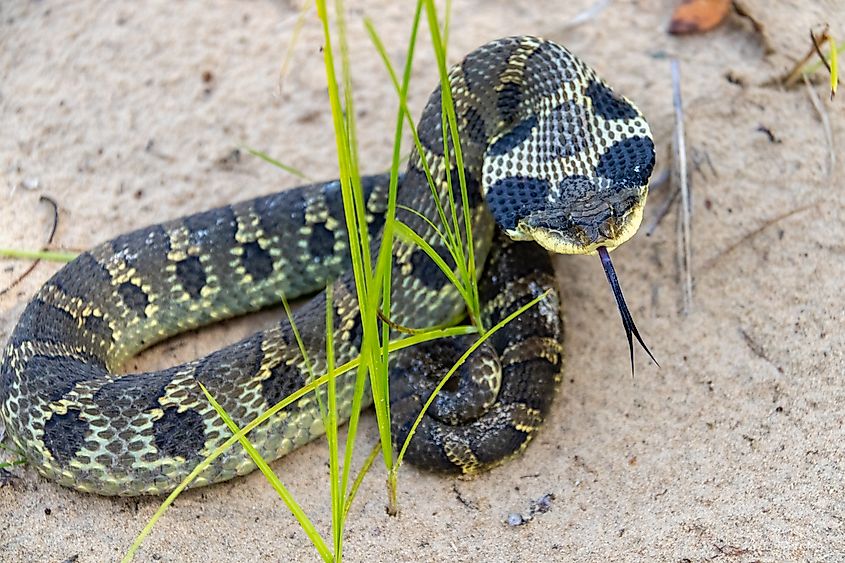
At Long Island’s easternmost tip, glacial bluffs plunge to the Atlantic and wind shapes open grasslands, maritime shrub, and small forest pockets among dunes and kettle depressions. A mild coastal climate and long sun exposure keep temperatures even, while sandy soils and seasonal wetlands concentrate reptile life unusual for the region.
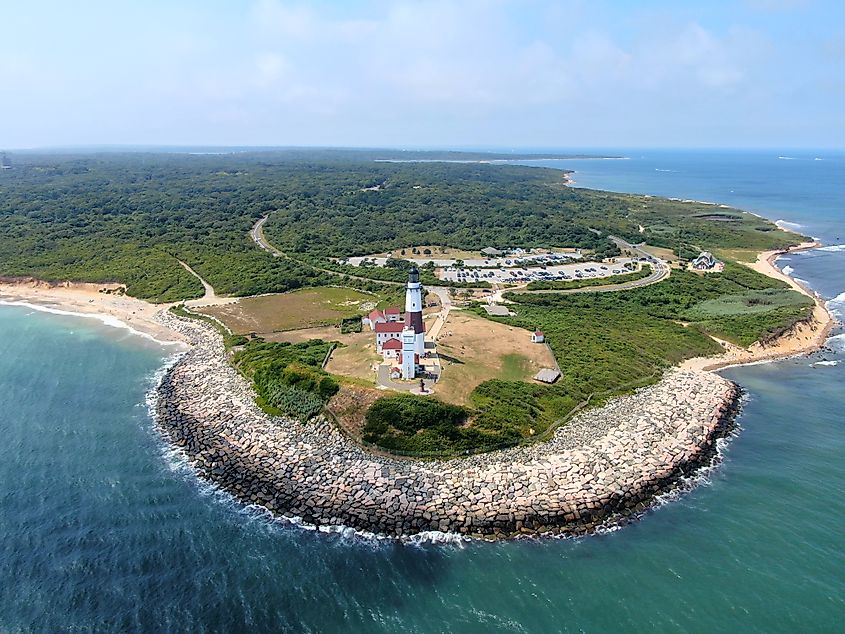
Black racers traverse grass and brush, basking on exposed paths between forays. Eastern hognose snakes hunt amphibians across open sand, known for flattening the neck or playing dead when confronted. Garter snakes cluster near freshwater seeps and wetland edges; ribbon snakes, less often seen, move along moist corridors. None of the park’s snake species are venomous, but all use camouflage and sudden motion, leading to close encounters in peak summer. Undeveloped acreage and steady coastal warmth yield high seasonal densities.
Wellesley Island State Park
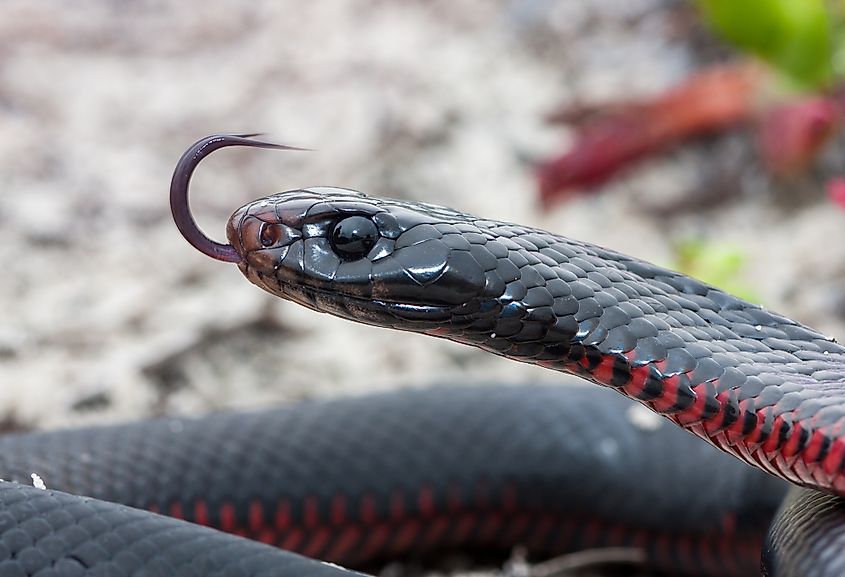
Set in the Thousand Islands, Wellesley Island mixes wetlands, rocky uplands, slow channels, forested shores, inland bogs, and granite outcrops that bank heat from spring into fall. Sparse development, rich freshwater, and a major waterway setting stabilize reptile populations and drive seasonal prey movements that support many snake species.
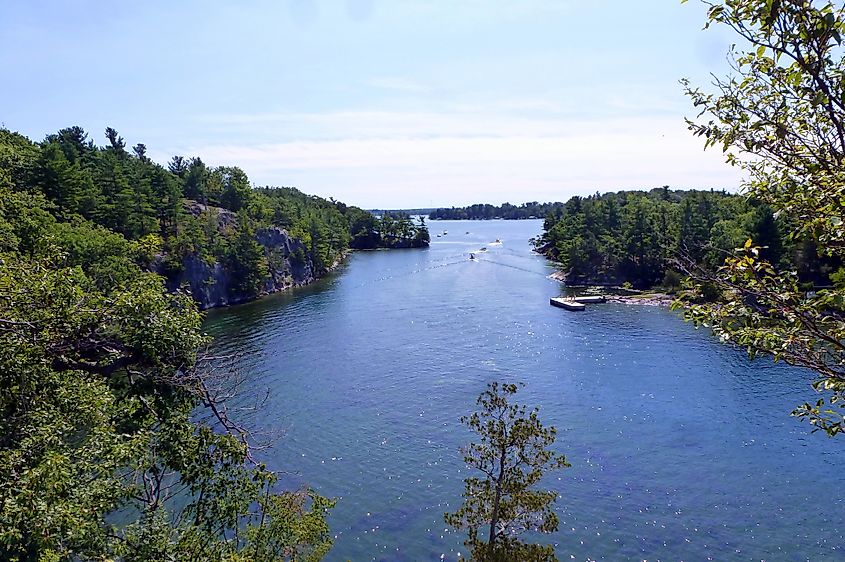
Northern water snakes line marshes, bays, and rocky banks, coiled on shoreline boulders or cruising the shallows—non-venomous yet defensive when handled. Eastern garter snakes are ubiquitous along forest edges, trail margins, and damp clearings by day. Red-bellied snakes hide in leaf litter and under logs near wetlands, seldom seen but widespread, while milk snakes favor wooded uplands and old foundations beneath stones and debris. Overlapping wet and dry habitats, little disturbance, and plentiful basking structure make this a high-activity island for the northern New York summer.
